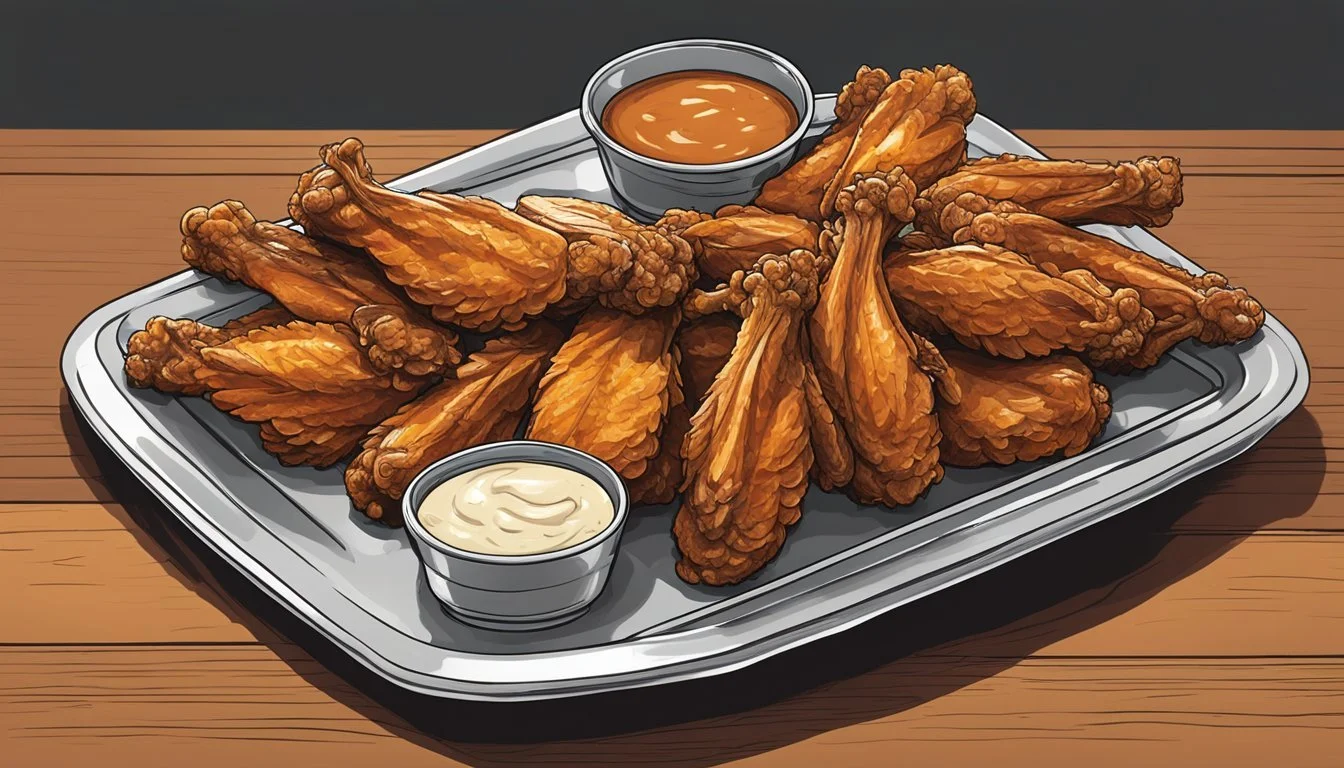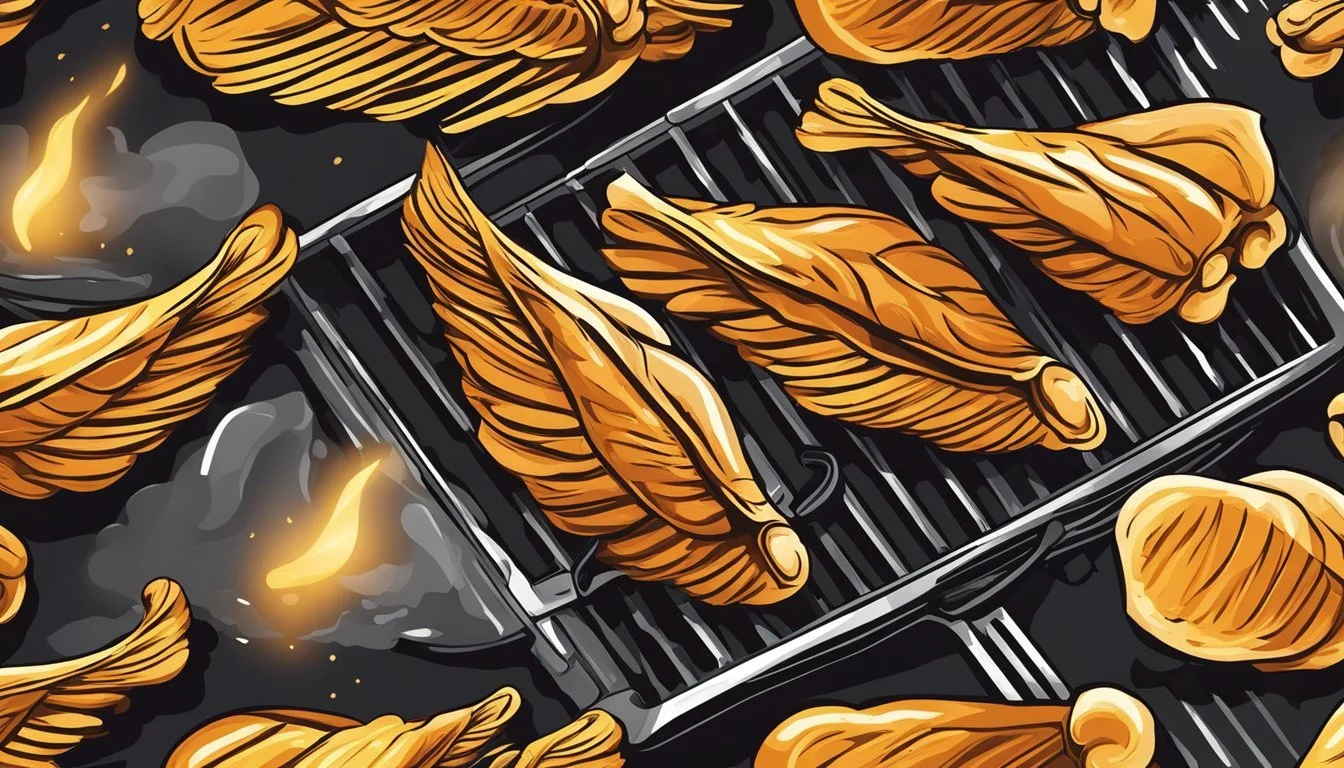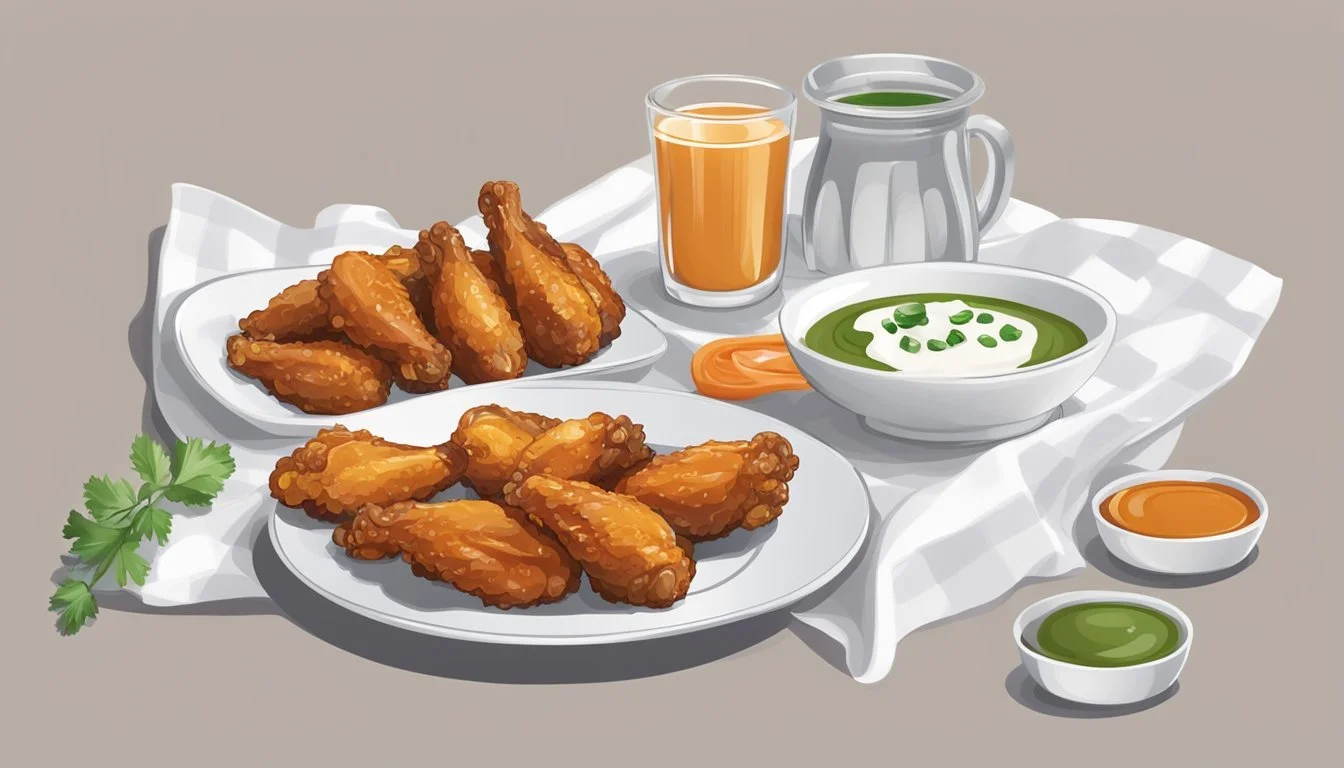Fresh vs. Frozen Chicken Wings: Which Option Delivers the Best Flavor and Convenience?
Chicken wings are a beloved snack for many, but the choice between fresh and frozen can impact flavor, texture, and convenience. Fresh chicken wings offer superior taste and texture, with a juicy interior and crispy exterior when cooked properly. They have a shorter shelf life but provide an unmatched eating experience.
Frozen chicken wings, on the other hand, offer convenience and longer storage options. While fresh wings generally taste better, properly thawed and cooked frozen wings can be nearly indistinguishable from their fresh counterparts. This makes them a popular choice for busy households and large gatherings.
Both fresh and frozen chicken wings have their merits. Fresh wings are ideal for those prioritizing taste and texture, while frozen wings cater to convenience and value. The decision ultimately depends on individual preferences, cooking skills, and storage capabilities.
Understanding Chicken Wings
Chicken wings come in fresh and frozen varieties, each with distinct characteristics affecting quality, nutrition, and shelf life. These factors influence consumer choices and culinary applications.
Fresh Vs. Frozen Wings
Fresh chicken wings offer superior taste and texture. They retain natural moisture and have a tender, juicy quality when cooked. Fresh wings are typically more expensive and require prompt use.
Frozen wings provide convenience and longer storage. They undergo freezing shortly after processing, preserving nutritional content. Proper thawing and cooking techniques can yield results comparable to fresh wings.
Some consumers prefer fresh wings for their perceived higher quality and flavor. Others opt for frozen wings due to their availability and cost-effectiveness.
The Meat Quality and Nutrition
Both fresh and frozen chicken wings offer similar nutritional profiles. They are rich in protein and contain essential vitamins and minerals.
Fresh wings may have a slight edge in texture and flavor. The freezing process can cause minor changes in meat structure, potentially affecting mouthfeel.
Nutritional differences between fresh and frozen wings are minimal. Proper handling and cooking are key factors in maintaining nutritional value for both types.
Shelf Life Considerations
Fresh chicken wings have a short shelf life, typically 1-2 days in the refrigerator. They require prompt use to ensure food safety and optimal quality.
Frozen wings can be stored for several months without significant quality loss. They offer flexibility in meal planning and reduce food waste.
Proper storage is crucial for both types. Fresh wings should be refrigerated at 40°F or below. Frozen wings must be kept at 0°F or lower to maintain quality and prevent bacterial growth.
Preparation and Cooking Techniques
Achieving delicious chicken wings involves proper preparation and cooking methods. The right techniques ensure flavorful, crispy results whether starting with fresh or frozen wings.
Thawing Frozen Wings
For best results, thaw frozen wings in the refrigerator overnight. Place them in a covered container on the bottom shelf to prevent drips. If short on time, use the cold water method. Submerge sealed wings in cold water, changing every 30 minutes until thawed.
Never thaw wings at room temperature, as this can promote bacterial growth. Microwave thawing is possible but may partially cook the wings, affecting texture.
Once thawed, pat wings dry with paper towels before seasoning or cooking. This step helps achieve crispier skin.
Seasoning for Flavor
Seasoning is crucial for tasty wings. Create a basic dry rub with salt, pepper, garlic powder, and paprika. Mix thoroughly and coat wings evenly.
For wet marinades, combine oil, vinegar, herbs, and spices. Marinate wings for 2-4 hours in the refrigerator.
Popular flavor options:
Buffalo: Hot sauce and butter
BBQ: Sweet and smoky sauce
Lemon pepper: Lemon zest, black pepper, garlic
Pat wings dry again after marinating to ensure crispiness during cooking.
Using an Oven or Air Fryer
Oven method:
Preheat to 400°F (200°C)
Place wings on a wire rack over a baking sheet
Bake for 45-50 minutes, flipping halfway through
Air fryer technique:
Preheat to 380°F (193°C)
Arrange wings in a single layer
Cook for 20-25 minutes, shaking basket occasionally
Both methods produce crispy exteriors and juicy interiors. The air fryer typically yields crispier results in less time.
Deep Frying for Crispiness
Deep frying creates exceptionally crispy wings. Heat oil to 375°F (190°C) in a deep fryer or large pot. Fry wings in small batches for 8-10 minutes until golden brown and internal temperature reaches 165°F (74°C).
Use a wire basket or slotted spoon to remove wings. Drain on paper towels to remove excess oil.
For extra crispiness, double fry:
Fry for 8 minutes at 350°F (175°C)
Remove and rest for 5 minutes
Fry again for 2 minutes at 375°F (190°C)
Always exercise caution when deep frying to prevent burns or fires.
Sauces and Flavors Profile
Wing sauces and flavors range from classic favorites to gourmet creations. The right sauce can elevate wings from a simple snack to a memorable culinary experience.
Classic Buffalo Sauce
Buffalo sauce remains the quintessential wing flavor. This tangy, spicy coating combines cayenne pepper sauce with butter for a perfect balance of heat and richness. Traditional Buffalo wings come in mild, medium, or hot varieties to suit different spice preferences.
The sauce's vinegar base cuts through the fattiness of the chicken skin, creating a mouthwatering contrast. Many restaurants offer their own unique twist on Buffalo sauce, adjusting the heat level or adding secret ingredients.
For an authentic experience, serve Buffalo wings with celery sticks and blue cheese or ranch dressing on the side.
BBQ and Honey Garlic Variations
BBQ sauce offers a sweet and smoky alternative to Buffalo. Classic BBQ wings feature a tomato-based sauce with molasses, vinegar, and spices. Some versions incorporate bourbon for added depth and a hint of caramel flavor.
Honey garlic wings blend sweetness with savory notes. This sauce typically combines honey, soy sauce, and minced garlic. The result is a sticky, glossy coating that caramelizes beautifully when baked or grilled.
Both BBQ and honey garlic sauces can be customized. Add chipotle for smokiness, increase the garlic for extra punch, or incorporate fruit preserves for a unique twist.
Exploring Gourmet Options
Gourmet wing flavors push boundaries and excite taste buds. Parmesan garlic wings offer a sophisticated Italian-inspired option. The sauce blends grated Parmesan, garlic, herbs, and olive oil for a rich, savory coating.
Lemon pepper wings provide a zesty, aromatic alternative. This dry rub combines lemon zest with cracked black pepper and herbs. The result is a bright, citrusy flavor that complements the chicken without overwhelming it.
Asian-inspired sauces like teriyaki or Korean gochujang bring international flair to wings. These complex flavors often incorporate soy sauce, ginger, and various spices for depth and heat.
For a unique twist, try bourbon-glazed wings. The alcohol cooks off, leaving behind a sweet, oaky flavor that pairs well with smoky spices.
Health and Safety
Proper storage and cooking techniques are crucial for ensuring the safety of chicken wings. Following recommended practices helps maintain quality and prevents foodborne illness.
Proper Storage Techniques
Fresh chicken wings should be stored in the refrigerator at 40°F (4°C) or below. Use within 1-2 days for best quality. Place wings in a sealed container or wrapped tightly to prevent juices from contaminating other foods.
Frozen wings can be stored in the freezer at 0°F (-18°C) for up to 9 months. Keep wings in their original packaging or transfer to freezer bags. Remove excess air to prevent freezer burn.
When thawing frozen wings, use the refrigerator method for safety. Place wings on a tray to catch any drips. Allow 24 hours of thawing time for every 4-5 pounds. Never thaw at room temperature.
Cooking to Safe Temperatures
Chicken wings must reach an internal temperature of 165°F (74°C) to be safe for consumption. Use a food thermometer to check doneness. Insert the probe into the thickest part of the wing, avoiding bone.
For baked wings, preheat oven to 400°F (204°C). Cook for 45-50 minutes, flipping halfway. For deep-fried wings, heat oil to 375°F (190°C). Fry in small batches for 8-10 minutes.
Let cooked wings rest for 3-5 minutes before serving. This allows juices to redistribute, improving texture and flavor. Discard any wings left at room temperature for over 2 hours.
Serving and Presentation
Elevate your chicken wing experience with thoughtful serving and presentation techniques. The right appetizers and plating choices can transform a simple dish into a memorable feast.
Choosing the Right Appetizers
Select appetizers that complement chicken wings without overshadowing them. Vegetable sticks like carrots and celery provide a crisp contrast to juicy wings. Offer a variety of dipping sauces such as blue cheese dressing, ranch, and barbecue to cater to different tastes. Consider lighter options like a fresh green salad or bruschetta to balance the richness of the wings.
For larger gatherings or Super Bowl parties, prepare easy-to-eat finger foods. Mini sliders, mozzarella sticks, or spinach-artichoke dip work well alongside wings. Avoid appetizers that require utensils, keeping the focus on handheld snacks.
Plating and Accompaniments
Present wings attractively to enhance the dining experience. Use large, shallow platters or baking sheets lined with parchment paper for easy serving and cleanup. Arrange wings in neat rows or circular patterns for visual appeal. Garnish with fresh herbs like parsley or cilantro for a pop of color.
Separate sauces into small bowls or ramekins, placing them strategically around the platter for easy access. Include wet wipes or finger bowls with lemon wedges for guests to clean their hands. For individual servings, use small plates or baskets lined with parchment paper.
Consider temperature when plating. Keep hot wings on a warm surface, using foil to retain heat if necessary. Chill plates for cold appetizers to maintain freshness. Provide tongs or serving forks to encourage hygienic handling of shared dishes.
Innovative Cooking Methods
Chefs and home cooks are exploring new ways to prepare chicken wings, moving beyond traditional frying and baking methods. These techniques aim to achieve crispy skin and juicy meat while saving time and effort.
Instant Pot Wings
The Instant Pot offers a quick and easy method for cooking chicken wings. Place wings on a trivet inside the pot with a cup of water. Cook on high pressure for 10 minutes, followed by a 5-minute natural pressure release. For crispy skin, transfer wings to a baking sheet and broil for 3-5 minutes per side. This technique produces tender meat in a fraction of the time compared to conventional methods.
Alternatively, use the Instant Pot's sauté function to brown wings before pressure cooking. This step enhances flavor and texture. After pressure cooking, a brief broil can further crisp the skin.
Broiler Tips for Perfect Skin
The broiler is a powerful tool for achieving crispy chicken wing skin. Preheat the broiler on high. Place wings on a wire rack set over a foil-lined baking sheet. Broil 6-8 inches from the heat source for 5-7 minutes per side. Watch closely to prevent burning.
For extra crispiness, pat wings dry with paper towels before broiling. Brush with oil or melted butter to promote browning. Turn wings frequently for even cooking. This method works well for both fresh and thawed frozen wings.
Alternative Appliances
Toaster ovens and air fryers offer efficient ways to cook small batches of wings. In a toaster oven, bake wings at 425°F for 20-25 minutes, flipping halfway through. For crispier results, finish with a brief broil.
Air fryers circulate hot air to create a crispy exterior. Cook wings at 380°F for 20-25 minutes, shaking the basket every 5 minutes. Increase temperature to 400°F for the last 5 minutes to enhance crispiness.
Some microwaves have crisp plate functions that can partially cook wings before finishing in the broiler. This combination method can reduce overall cooking time while still achieving a crispy exterior.
Side Dishes and Pairings
Complementing chicken wings with the right side dishes enhances the overall dining experience. The ideal pairings balance flavors and textures while satisfying diverse palates.
Salad Selections
Crisp salads offer a refreshing contrast to rich, savory wings. A classic Caesar salad with crunchy romaine lettuce and tangy dressing cuts through the heaviness of buffalo wings. For honey BBQ wings, try a light coleslaw with a vinegar-based dressing to balance the sweetness.
Mixed green salads with vibrant vegetables and a zesty vinaigrette provide a nutritious counterpoint. Consider adding blue cheese crumbles to salads paired with spicy wings for an extra flavor dimension.
Fruit-based salads, such as a spinach and strawberry mix, can complement sweeter wing flavors like honey BBQ.
Staple Sides: Fries and Vegetables
French fries are a classic wing accompaniment. Seasoned or plain, they offer a satisfying crunch. Sweet potato fries provide a slightly healthier alternative with a touch of sweetness.
Celery and carrot sticks are traditional vegetable sides, often served with ranch or blue cheese dip. These crisp veggies offer a cool, fresh contrast to spicy buffalo wings.
Grilled or roasted vegetables like zucchini, bell peppers, and asparagus add a nutritious element to the meal. For a heartier option, consider corn on the cob or baked potatoes.
Onion rings or fried pickles can add variety to the typical fry selection, pairing well with ranch dressing.
Consumer Tips
Choosing between fresh and frozen wings involves considering cost, convenience, and quality factors. Smart shoppers can maximize value and flavor with the right strategies.
Cost-Effectiveness of Wings
Fresh wings typically cost more than frozen but offer superior taste and texture. Frozen wings provide better value, especially when buying in bulk. Look for sales and discounts on both types to get the best deals. Some stores offer loyalty programs or coupons for additional savings.
Buying whole wings and separating them at home can be more economical than pre-cut pieces. Consider the cooking method when evaluating cost - deep-frying uses more oil, adding to overall expenses.
Buying Tips and Tricks
Check packaging dates on fresh wings to ensure maximum freshness. For frozen wings, look for bags without ice crystals, which can indicate freezer burn.
Select wings with even coloring and no visible blemishes. Avoid packages with excess liquid, as this may affect quality.
Buy in quantities suitable for your needs to prevent waste. Proper storage extends shelf life - fresh wings last 1-2 days in the refrigerator, while frozen wings keep for months.
Thaw frozen wings in the refrigerator overnight for best results. Pat dry before cooking to improve crispiness. Consider marinating or seasoning wings before cooking to enhance flavor.








